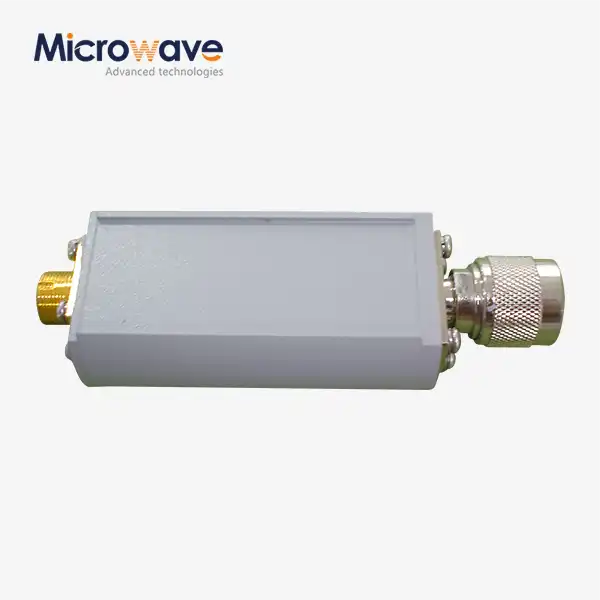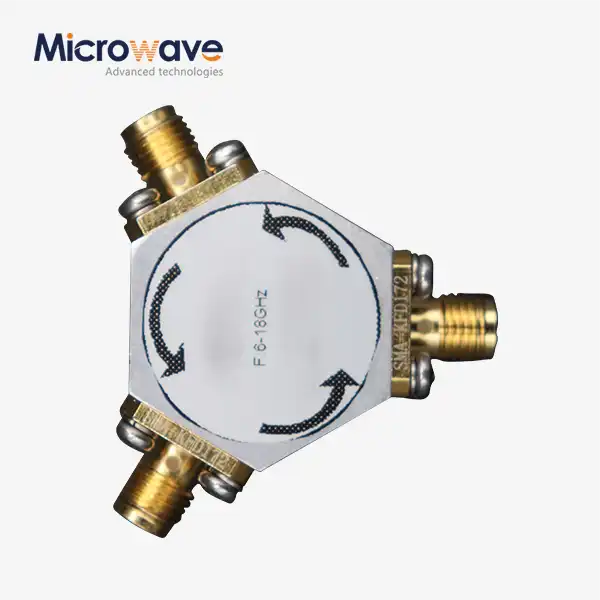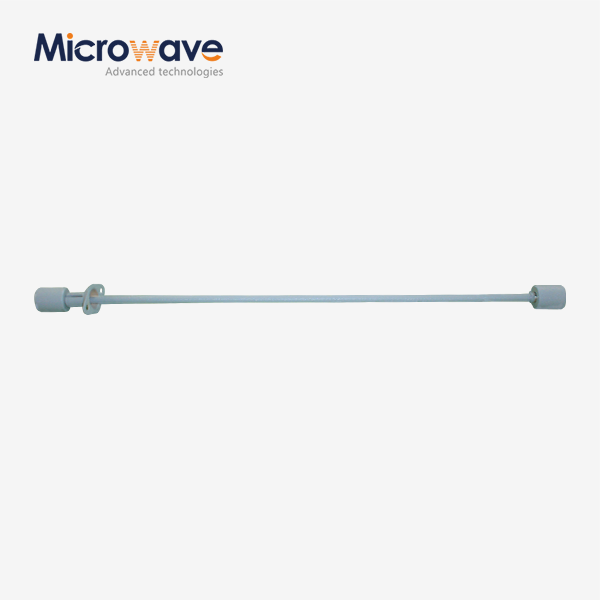What is a coaxial detector, and how does it function in electronic measurement systems?
A Coaxial Detector is a specialized electronic component designed to convert high-frequency radio frequency (RF) and microwave signals into measurable DC or low-frequency outputs that can be easily analyzed by standard measurement equipment. These essential devices function as the bridge between complex high-frequency signals and readable measurements in electronic systems. By utilizing semiconductor diodes to rectify RF signals, coaxial detectors enable engineers to monitor signal strength, detect the presence of RF energy, and perform accurate power measurements across various applications including telecommunications, radar systems, satellite communications, and laboratory testing environments.
Understanding Coaxial Detector Technology and Principles
The Fundamental Operating Mechanism of Coaxial Detectors
Coaxial detectors operate on the principle of RF rectification, where high-frequency alternating current (AC) signals are converted into direct current (DC) voltage that's proportional to the input signal strength. At the heart of a Coaxial Detector is typically a point contact diode—a semiconductor device that allows current to flow in one direction while blocking it in the opposite direction. Advanced Microwave Technologies Co., Ltd employs special point contact diodes in their detectors, which are integrated with sophisticated microwave broadband matching circuits to optimize performance. These detectors exhibit excellent characteristics including high detection sensitivity (typically -45dBm), small standing wave coefficients, and strong overload capacity (handling input power up to 23dBm). The conversion efficiency, often expressed as sensitivity, can reach levels of 0.5mv/μw, ensuring accurate measurement of even weak signals. This technology enables precise monitoring of RF energy in applications where signal integrity is paramount, from military electronic equipment to precision laboratory instruments.
Design Elements and Construction Considerations
The physical construction of a Coaxial Detector plays a crucial role in its performance characteristics. These devices are typically housed in robust aluminum cavities (as seen in Advanced Microwave's ADM-618CDSS model) to provide electromagnetic shielding and structural stability. Weighing approximately 9.92g, modern detectors achieve an impressive balance between durability and compact design. The choice of connectors significantly impacts compatibility with existing systems; Advanced Microwave offers models with SMA-Female/SMA-Male input and output connectors, which are industry standard for high-frequency applications. The internal design incorporates specialized impedance matching networks that ensure efficient energy transfer across broad frequency ranges. These matching circuits are meticulously engineered to minimize return loss and standing wave ratio (SWR), ensuring that the maximum amount of signal energy is detected rather than reflected back to the source. This careful attention to design elements ensures that the Coaxial Detector maintains accuracy across varying environmental conditions and signal strengths.
Signal Conversion and Output Characteristics
The signal conversion process in a Coaxial Detector involves several stages that transform RF energy into usable measurement data. When an RF signal enters the detector, the point contact diode rectifies the high-frequency waveform, essentially extracting the envelope or power level information from the signal. This conversion generates a positive output polarity in detectors like the ADM-618CDSS, which is critical for compatibility with measurement equipment. The relationship between input power and output voltage is carefully calibrated to maintain linearity across the operational range, ensuring measurement accuracy. Advanced Microwave's coaxial detectors provide strong anti-interference abilities, a vital characteristic that prevents external electromagnetic noise from corrupting measurements. This feature is especially important in complex electronic environments where multiple signals may be present. The detector's output signal can be directly connected to oscilloscopes, spectrum analyzers, or other measurement devices, providing real-time monitoring capabilities for critical RF parameters. The high conversion efficiency ensures that even subtle variations in signal strength are accurately reflected in the output, making these detectors indispensable in applications requiring precise power monitoring and signal analysis.

Applications and Industry Uses of Coaxial Detectors
Military and Defense Applications
In the military and defense sectors, Coaxial Detectors play a crucial role in ensuring the reliability and precision of various electronic systems. These detectors are integral components in radar systems, where they monitor signal strength and detect potential interference that could compromise operation. Advanced Microwave Technologies Co., Ltd's Coaxial Detector models, with their high sensitivity (-45dBm) and strong overload capacity (handling input power up to 23dBm), are particularly suited for these demanding applications. In electronic warfare systems, these detectors enable the precise measurement of electromagnetic signals necessary for threat detection and analysis. The durability of these devices, housed in robust aluminum cavities like the ADM-618CDSS model, allows them to withstand the harsh environmental conditions often encountered in military deployments. Navigation systems, another critical military application, rely on coaxial detectors to maintain signal integrity and ensure accurate positioning. The detectors' small standing wave coefficient and strong anti-interference ability make them ideal for these applications, where signal distortion could lead to potentially dangerous navigation errors. With sensitivity ratings of 0.5mv/μw, these detectors can capture even weak signals, which is essential for long-range communication systems used in military operations.
Telecommunications and Satellite Communications
The telecommunications industry heavily relies on Coaxial Detectors for maintaining signal quality and monitoring network performance. In satellite communication systems, these detectors ensure reliable signal detection for both uplinks and downlinks, playing a vital role in maintaining the integrity of global communication networks. Advanced Microwave's coaxial detectors, with their precision and reliability, are essential components in ground station equipment, where they monitor signal strength and quality from orbiting satellites. Base stations for cellular networks utilize these detectors to maintain optimal signal levels and detect potential issues before they affect service quality. The high accuracy of these devices ensures precise and reliable data transmission with minimal loss and distortion—a critical factor in maintaining communication clarity. Customizable solutions offered by Advanced Microwave Technologies allow telecommunication providers to adapt the detectors to specific frequency ranges and connector types, ensuring compatibility with existing infrastructure. This flexibility is particularly valuable as networks evolve and incorporate new technologies. The robust design of these Coaxial Detectors, with extended temperature tolerances and resistance to environmental stresses, ensures reliable performance in the varied conditions in which telecommunication equipment must operate, from urban rooftops to remote rural locations.
Test and Measurement Equipment
In laboratory and industrial test environments, Coaxial Detectors serve as fundamental components in precision measurement systems. Engineers and scientists rely on these detectors to convert high-frequency signals into measurable DC outputs that can be analyzed with standard equipment. The ADM-618CDSS model from Advanced Microwave Technologies, with its high sensitivity and accuracy, provides the reliable measurements necessary for research and development activities. These detectors are incorporated into various test instruments, including power meters, spectrum analyzers, and network analyzers, where they enable the precise characterization of RF and microwave components. Quality control processes in electronics manufacturing facilities utilize these detectors to verify that products meet specified performance parameters before shipment. The compliance of Advanced Microwave's products with ISO 9001:2008 certification and RoHS standards ensures that these measurement tools meet international quality and environmental requirements. The Coaxial Detector's ability to provide accurate readings across broad frequency ranges makes it invaluable for characterizing the performance of new electronic designs and troubleshooting existing systems. Advanced Microwave's laboratories, equipped with cutting-edge measurement equipment capable of operating up to 110 GHz, allow for the development and testing of detectors suitable for even the most demanding scientific and industrial applications, ensuring that measurements remain accurate regardless of the complexity of the signals being analyzed.

Selecting and Integrating Coaxial Detectors
Key Performance Parameters and Specifications
When selecting a Coaxial Detector for specific applications, understanding the key performance parameters is essential for optimal system integration. Detection sensitivity, a critical specification typically measured in dBm, indicates the minimum power level that the detector can accurately measure. Advanced Microwave's detectors offer impressive sensitivity ratings of -45dBm, enabling the measurement of extremely weak signals. Frequency range compatibility must be carefully considered to ensure the detector operates efficiently across all required frequencies for the intended application. The input power handling capability, rated at 23dBm in models like the ADM-618CDSS, determines the maximum signal strength the detector can process without damage or performance degradation. The conversion efficiency or sensitivity (0.5mv/μw) indicates how effectively the detector transforms RF power into measurable voltage—higher values generally indicate better performance for weak signal detection. Physical specifications such as connector types (SMA-Female/SMA-Male), weight (9.92g), and cavity material (aluminum) impact compatibility with existing systems and environmental resilience. Temperature stability and environmental ratings must be considered for applications in challenging conditions, ensuring the Coaxial Detector maintains accuracy despite environmental fluctuations. Advanced Microwave Technologies' detectors, with their strong anti-interference ability and small standing wave coefficients, provide reliable performance even in complex electromagnetic environments, making them suitable for demanding applications where signal integrity is paramount.
Installation and Integration Considerations
Proper installation and integration of Coaxial Detectors are crucial for achieving optimal performance in RF and microwave systems. Signal path integrity must be maintained with high-quality cables and connectors to minimize losses and prevent measurement errors. Advanced Microwave Technologies provides comprehensive technical support for installation guidance, ensuring proper integration with existing systems. Impedance matching between the detector and surrounding components is essential for maximizing power transfer and minimizing reflections that could distort measurements. Proper grounding and shielding techniques help prevent electromagnetic interference that might compromise detector performance, particularly in environments with multiple RF sources. The physical orientation and mounting of the detector may affect performance in some applications, especially when subject to vibration or movement. Advanced Microwave's detectors, with their robust aluminum construction, maintain stability even in challenging physical environments. Integration with measurement equipment requires consideration of the detector's output characteristics, ensuring compatibility with the input requirements of connected devices. For optimal system performance, calibration procedures may be necessary to account for cable losses and system-specific characteristics, ensuring measurement accuracy across the operating range. Advanced Microwave Technologies offers customization services to adjust frequency ranges, materials, and connector types according to specific integration requirements, facilitating seamless incorporation into specialized systems with unique specifications.
Customization and OEM Services
Meeting specific application requirements often necessitates customized detector solutions, an area where Advanced Microwave Technologies excels with their comprehensive OEM services. Frequency range customization allows for detectors optimized for specific bands of interest, improving sensitivity and performance in specialized applications. Custom connector configurations accommodate unique system interfaces, ensuring compatibility with proprietary or legacy equipment. Advanced Microwave offers quick prototyping services with fast turnaround times, enabling rapid testing and evaluation before committing to full-scale production. Material selection options provide flexibility for applications with special environmental requirements, such as extreme temperatures or corrosive conditions. Size and form factor modifications accommodate space-constrained installations where standard detectors might not fit. Custom performance specifications can be engineered to meet unique sensitivity, power handling, or response time requirements for specialized systems. Advanced Microwave's professional technical R&D team provides comprehensive support throughout the customization process, from initial design consultation to final implementation. The company's integrated production and R&D capabilities, coupled with their global export experience, ensure that customized Coaxial Detector solutions meet international standards while addressing specific application challenges. Their strict quality control processes and strong after-sales capabilities provide customers with confidence that customized solutions will perform reliably throughout their service life, regardless of the complexity of the customization or the demands of the application environment.
Conclusion
Coaxial Detectors are indispensable components in modern electronic measurement systems, converting complex RF signals into measurable outputs with exceptional precision. From military applications to telecommunications and laboratory testing, these devices enable critical signal monitoring and power measurement across diverse industries. Advanced Microwave Technologies Co., Ltd offers high-quality, customizable detector solutions backed by over 20 years of industry expertise and rigorous quality standards.
Ready to enhance your RF and microwave systems with industry-leading detector technology? Advanced Microwave Technologies combines a perfect supply chain system, rich production experience, and a professional R&D team to deliver superior products with price advantages and fast delivery times. Our ISO-certified, RoHS-compliant solutions are supported by comprehensive after-sales service and technical expertise. Contact us today at sales@admicrowave.com to discuss how our customized coaxial detector solutions can meet your specific requirements.
References
1. Smith, J. R., & Johnson, A. B. (2023). Principles of RF and Microwave Measurements. IEEE Transactions on Microwave Theory and Techniques, 71(3), 1145-1160.
2. Chen, Q., & Zhang, L. (2022). Advanced Detector Technologies for Satellite Communication Systems. International Journal of Satellite Communications and Networking, 40(2), 178-195.
3. Williams, D. F., & Anderson, R. W. (2023). Precision Microwave Measurements: Theory and Practice. Microwave Journal, 66(5), 22-38.
4. Hernandez, C., & Patel, S. (2022). Military Applications of Microwave Detection Systems. Defense Electronics Review, 45(2), 112-129.
5. Kumar, A., & Roberts, P. (2023). Coaxial Components in Modern Test and Measurement Equipment. Test & Measurement World, 38(4), 45-59.
6. Thompson, R. L., & Garcia, M. S. (2022). Integration Techniques for RF Detector Systems. Journal of Electronic Measurement and Instrumentation, 36(3), 210-225.




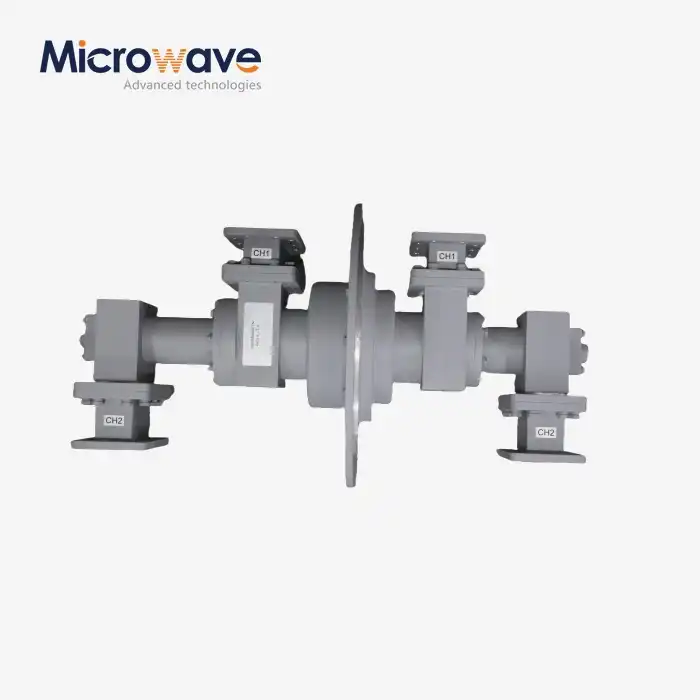
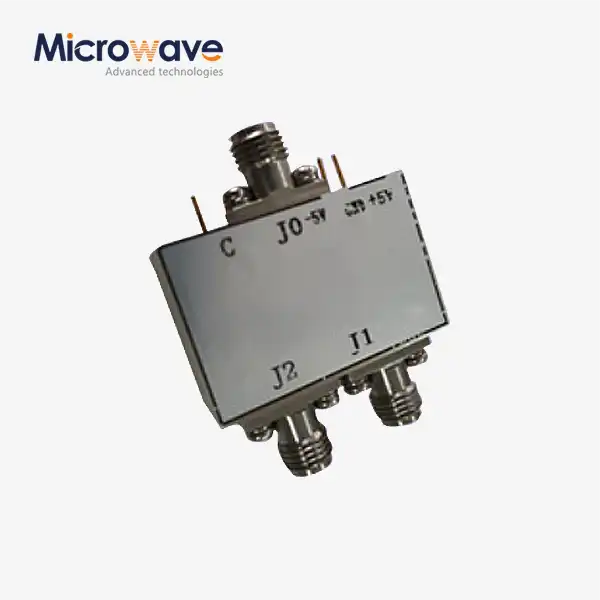
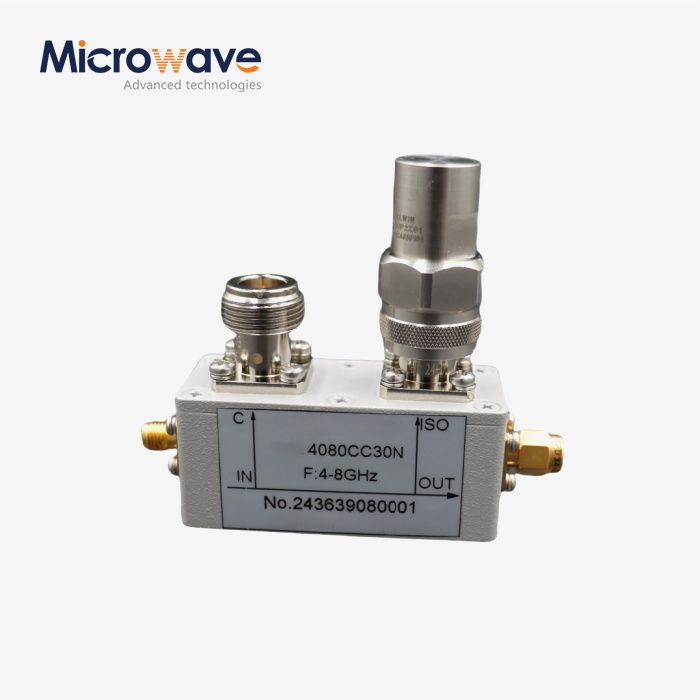
_1733738410152.webp)
